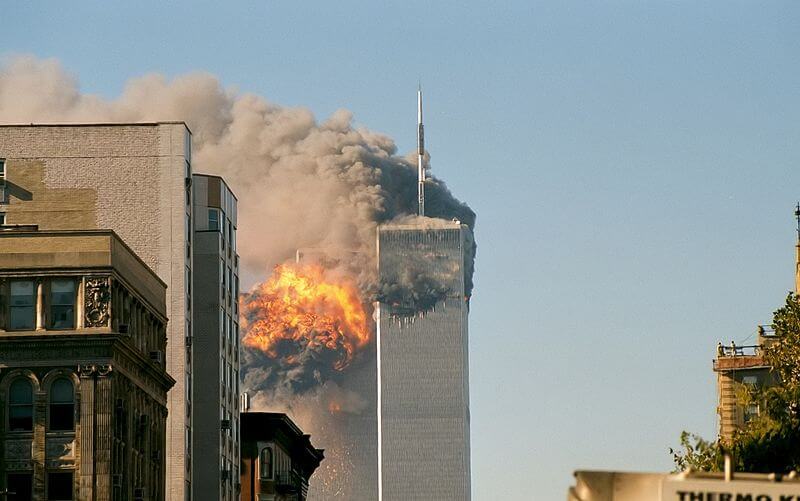


The Changing Face of Terror
By Gaurav Yadav, Official Jaipur Literature Festival Blogger
In the twentieth century, terrorism was typically the deployment of discriminate violence for a specific purpose. Horrific and frightening though it still was, the specific, finite nature of these objectives meant there was room for negotiation and even containment to some degree. Objectives included to draw attention to a conflict, such as the 1972 Palestinian attack on Israeli athletes at the Munich Olympic Games; to avenge a perceived injustice, such as the 1985 bombing of Air India Flight 182 from Canada, in retaliation for the storming of the Golden temple by the Indian military; or to put pressure on foreign troops to withdraw, such as the 1983 Beirut barracks bombing that killed 300 US and French servicemen, and eventually led to the withdrawal of the Multinational Force from Lebanon.
However, at the turn of the century, a new, more indiscriminate form of violence began to appear around the world, which was less about securing a specific outcome, and more a symptom of hostility between differing ideologies. This new kind of terrorism was epitomized by the 9/11 attacks on the World Trade Centre in New York City, when Al Qaeda attacked the World Trade Center, killing almost 3000 people. It was an exceedingly complex operation that had taken long and detailed planning, and a large number of people to execute it. Post 9/11 counterterrorism actions were developed to prevent another big attack on US homeland. The military and intelligence agencies succeeded in disrupting terror networks overseas, and Osama Bin Laden and most other senior Al Qaeda were killed. Domestically, security procedures were made much more rigorous, and surveillance culture much more pervasive. The combination made a repeat of 9/11 very difficult. In this respect, post 9/11 counterterrorism strategy could be said to have been substantially successful.
However, one arguably less successful aspect of the US campaign against terror was the 2003 invasion of Iraq to remove Saddam Hussein, which was justified by (since disproved) intelligence that Hussein had concealed chemical weapons. The resultant governance and security vacuum in Iraq led to insurgency. Once the US forces withdrew in 2011, a hitherto unknown organization called ISIS quickly took over large swathes of territories in Iraq and neighboring Syria and declared a caliphate.
To date ISIS has focussed on more frequent and less complex acts of terror that Al Qaeda, such as the mass shootings in an Orlando night club and San Bernardino in America, and a number of major attacks targeting westerners and non-westerners in Nice, Paris, Brussels, Dhaka, Tunisia, Yemen, Egypt and Turkey.
Due to almost two year American-led air campaign, the Islamic State has since lost around 50 percent of its territory in Iraq and 20 percent in Syria, and is likely to lose the rest with time. However it does not mean that ISIS will cease to be a threat, since the group is now reverting to the insurgency tactics it relied on before the formation of its caliphate.
Unlike Al Qaeda, which was hierarchical and centralized, ISIS has the energy and unpredictability of a populist movement. This might be the group’s biggest strength and the key to its long-term survival: there are an unknown number of self-radicalized individuals who have consumed ISIS propaganda materials via the internet and are attracted to its brutal ideology. These can launch lone wolf attacks around the world, without a larger group’s knowledge or support.
This kind of terrorism works almost like a franchise operation. Unlike the past modes of terrorism, single cell terrorism is much more difficult to detect and stop. There is no network that can be infiltrated, no “chatter†that can be picked up, no big scale preparations that can provide advance warning. Arguably, this challenge can therefore best be addressed through community outreach to vulnerable individuals, and targeted strategies to counter extremist propaganda, as well as surveillance and national security measures. The conditions that create terrorists are complex, and response and prevention measures need to be complex to meet them.
But despite the ‘moving target’ nature of this new kind of terrorism, rightful feelings of rage, horror, powerlessness and fear must exist side by side with the facts and risk analysis data, if we are not give in to media hysteria or political propaganda. We also need to remember a key lesson of history: one man’s terrorist can be another man’s freedom fighter. The label ‘terrorism’ can be used as a convenient catch-all term for those opposing the power structures in a given nation. The anti-apartheid, anti-slavery and pro-women’s suffrage movements all involved intentions and actions that would these days be classified as terrorism.
And let us not forget, the ‘War on Terror’ has profound consequences for civil liberties. Whistleblowers such as Edward Snowdon have revealed that the US and UK Governments have been monitoring phone calls, internet activity, emails, text messages and other communications without warrants, a huge violation on Article 8 of the Human Rights Act: the right to privacy. Bills like the UK’s ‘Snoopers Charter’ have been hugely criticized by civil liberties campaigners like Liberty. Hundreds of people have been subjected to extraordinary rendition around the world since the War on Terror began, a practice considered by human rights campaigners to be nothing more than state-sponsored abduction and torture, often by proxy. The Patriot Act in America has authorised the indefinite detention of non-American citizens on suspicion of terrorism since 2001, without trial or recourse to legal representation, such as in Guantanamo Bay. Increasing police powers, and restrictions on the right to protest in the USA and UK have been criticized by many campaigners.
Civil liberties campaigners argue that we must ensure that security measures to protect against terrorism do not come at the cost of our civil liberties and human rights. If we give in to endless erosions of our rights and freedoms in the name of fighting an invisible, endless threat, then terrorism has already won. Ultimately, terrorism is a battle for the mind: to create fear, control, spread chaos, undermine society, create division. If we give in to that mindset, then too, terrorism has already won. And of course, given that the ‘War on Terror’ is now a trillion-dollar global industry, there will always be those on hand to profit from that.
Image: Protestors dressed as hooded detainees by Ben Schumin [CC BY-SA 2.5] , via Wikimedia Commons
©Gaurav Yadav, 2016
Like this blog? Find more interesting blogs about the Jaipur Literature Festival in Jaipur too! Click here.
Disclaimer: We do not endorse, support or subscribe for any statement, view or comment expressed or posted on this blog or social media page. Any view, statement or comment posted on this platform does not represent the views of Teamwork Arts, its affiliates or its employees or any person associate with Jaipur Literature Festival (JLF), unless specifically stated otherwise.



Leave a comment